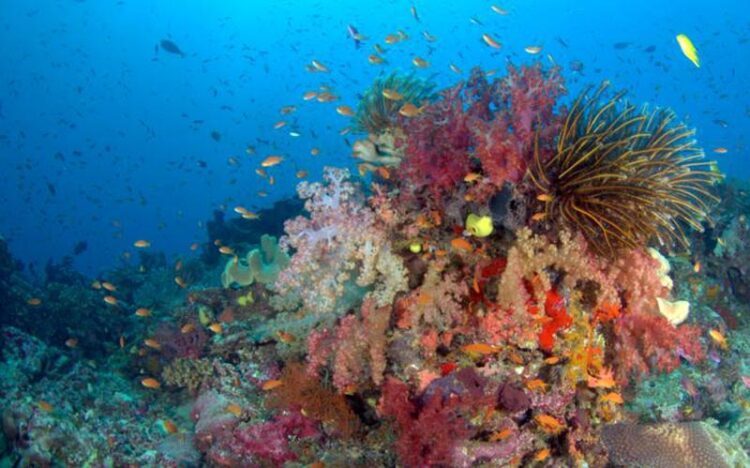Satellites unveil the size and nature of the world’s coral reefs

A shallow coral reef on Australia’s Great Barrier Reef.
Credit: Chris Roelfsema
University of Queensland-led research has shown there is more coral reef area across the globe than previously thought, with detailed satellite mapping helping to conserve these vital ecosystems.
Dr Mitchell Lyons from UQ’s School of the Environment, working as part of the Allen Coral Atlas project, said scientists have now identified 348,000 square kilometres of shallow coral reefs, up to 20-30 metres deep.
“This revises up our previous estimate of shallow reefs in the world’s oceans,” Dr Lyons said.
“Importantly, the high-resolution, up-to-date mapping satellite technology also allows us to see what these habitats are made from.
“We’ve found 80,000 square kilometres of reef have a hard bottom, where coral tends to grow, as opposed to soft bottom like sand, rubble or seagrass.
“This data will allow scientists, conservationists, and policymakers to better understand and manage reef systems.”
More than 1.5 million samples and 100 trillion pixels from the Sentinel-2 and Planet Dove CubeSat satellites were used to capture fine scale detail on a high-resolution global map.
“This is the first accurate depiction of the distribution and composition of the world’s coral reefs, with clear and consistent terminology,” Dr Lyons said.
“It’s more than just a map – it’s a tool for positive change for reefs and coastal and marine environments at large.”
UQ’s Associate Professor Chris Roelfsema said the reef mapping project, a collaboration with more than 480 contributors, is already being used in coral reef conservation around the world.
“The maps and associated data are publicly accessible through the Allen Coral Atlas and Google Earth Engine, reaching a global audience,” Dr Roelfsema said.
“They’re being used to inform projects in Australia, Indonesia, the Timor and Arafura Seas, Fiji, Solomon Islands, Tonga, Vanuatu, Panama, Belize, Bangladesh, India, Maldives, Sri Lanka, Kenya and western Micronesia.
“The details provided by these maps empowers scientists, policymakers and local communities to make informed decisions for the preservation of our coral reefs.”
The Allen Coral Atlas was conceived and funded by the late Paul Allen’s Vulcan Inc. and managed by Arizona State University along with partners from Planet, the Coral Reef Alliance and The University of Queensland.
The research paper is published in Cell Reports Sustainability.
Images available via Dropbox.
Journal: Cell Reports Sustainability
DOI: 10.1016/j.crsus.2024.100015
Method of Research: Observational study
Subject of Research: Not applicable
Article Title: New global area estimates for coral reefs from high-resolution mapping
Article Publication Date: 13-Feb-2024
All latest news from the category: Ecology, The Environment and Conservation
This complex theme deals primarily with interactions between organisms and the environmental factors that impact them, but to a greater extent between individual inanimate environmental factors.
innovations-report offers informative reports and articles on topics such as climate protection, landscape conservation, ecological systems, wildlife and nature parks and ecosystem efficiency and balance.
Newest articles

Innovative 3D printed scaffolds offer new hope for bone healing
Researchers at the Institute for Bioengineering of Catalonia have developed novel 3D printed PLA-CaP scaffolds that promote blood vessel formation, ensuring better healing and regeneration of bone tissue. Bone is…

The surprising role of gut infection in Alzheimer’s disease
ASU- and Banner Alzheimer’s Institute-led study implicates link between a common virus and the disease, which travels from the gut to the brain and may be a target for antiviral…

Molecular gardening: New enzymes discovered for protein modification pruning
How deubiquitinases USP53 and USP54 cleave long polyubiquitin chains and how the former is linked to liver disease in children. Deubiquitinases (DUBs) are enzymes used by cells to trim protein…



